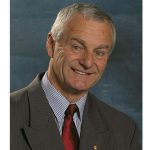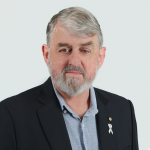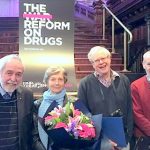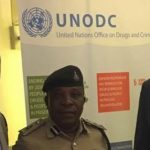Legalise Drugs to Reduce Violent Crime: An Interview With LEAP’s Greg Denham
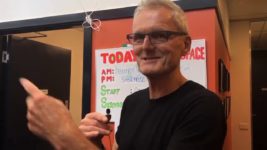
One of the unintended consequences of the war on drugs listed in the 2011 Global Commission on Drug Policy report is “the growth of a ‘huge criminal black market’, financed by the risk-escalated profits of supplying international demand for illicit drugs”.
The criminal organisations that have evolved out of the past century of drug prohibition have brought with them the “violence, intimidation and corruption” now associated with the illegal drug market, the report continues.
The link between Australian motorcycle gangs and the trade in illegal drugs is well-established. But, the links between these local gangs and Mexican drug cartels are just emerging. At least, that’s what the authorities are aware of.
Over 33,000 people lost their lives in Mexico last year due to drug-related violence. And while there’s nothing of that scale in this country, that’s slim comfort to the families of the men who were gun downed out the front of a Prahran nightclub in April in a suspected drug-related incident.
Hardly a dent
On Monday, NSW police seized close to 400 kilograms of cocaine in the NSW south western town of Bungendore. The drugs were hidden inside a 20 tonne Caterpillar excavator that had been shipped inside a container from South Africa.
But, as the 2015-16 NSW Crime Commission Annual Report points out, while “commendable law enforcement efforts” nationwide have led to “larger seizures and more arrests”, these have “little, if any, effect on the quantities of prohibited drugs available”.
Indeed, as the NSWCC states in the report, organised crime is increasing, and it’s at levels not previously seen, while the growth of these criminal networks “is almost entirely driven by the prohibited drugs market”.
Drug cartels and gangs are beasts of the 20th century, which didn’t exist prior to drug prohibition. Nixon launched the drug war in 1971. This intensification of the law enforcement side of prohibition has only made the drug market more lucrative and the criminal networks running it stronger.
Prohibition is the crime
Greg Denham is a former police senior sergeant. He served fifteen years on the Victorian police force and two years as an officer in Queensland. These days, he’s one of the leading voices in the push for drug law reform. And he asserts legalising drugs would reduce violence in the community.
Mr Denham is the Australian representative for Law Enforcement Action Partnership (LEAP). Comprised of current and former police officers and other criminal justice professionals, LEAP advocates for an end to drug prohibition and the establishment of a regulated market.
Sydney Criminal Lawyers spoke to Greg Denham about rising drug violence in the community, the way in which drug prohibition is funding crime, and how ending the war on drugs would cancel the violence associated with the trade in illicit substances.
Firstly, in a recent interview prominent UK barrister Chris Daw QC said that drugs, such as heroin and cocaine, are expensive because they’re illegal, and this leads some to resort to crime.
Mr Denham, would you say media reports about violent drug takers committing crimes can be attributed to drug prohibition?
That’s the isolated incident that occurs. It gets a lot of media attention, particularly a violent robbery carried out by a person who may be chronically dependent.
But, overall, the majority of people who are chronically dependent on drugs – particularly street-based drugs – don’t commit violent crime.
It’s usually to do with the drug market. It’s usually to do with someone who tried to rip someone off, or someone who has to settle a score over a drug deal that went wrong.
In many cases, people who are chronically dependent on drugs are the victims. It’s wrong for people to associate people who are dependent on drugs – particularly heroin and amphetamines – as being violent people, because the majority aren’t.
You’ve suggested drug-related violence in the community is caused by those on the supply side of the illegal drug trade. A well-known example of that is the outlaw motorcycle gang. Would you say the illegal drug trade has shaped the way that bikie gangs function?
Sure. If you look at the history of outlaw motorcycle gangs going back 30 or 40 years, they’ve had a strong association with the illicit drug trade: locally, in the United States and in other parts of the world. They run the drug trade, particularly methamphetamine in Australia.
Those outlaw motorcycle gangs have international links. The first person to demonstrate production to local motorcycle gangs, like the Hells Angels in Australia, was someone that came in from the United States to demonstrate how amphetamines can be cooked in clandestine laboratories.
So, when we look at the meth trade, locally produced ecstasy and amphetamine-type stimulants, that market is controlled to a significant degree by outlaw motorcycle gangs. They’re behind the manufacturing, supply, distribution and, of course, the money that’s associated with the illicit drug trade.
What sort of violence in the community would you say is directly attributable to the trade in illegal drugs?
There’s direct violence in relation to ensuring that they get access to people to sell drugs. A good example of that was the drive-by shooting earlier this year in Prahran, where two people were killed and four were injured.
That was a direct result of wanting to send a message to the people that were distributing amphetamines in that area that they want to control that market.
And there’s been numerous drive-by shootings over the last 20 years of a similar type, particularly in nightclubs and strip joints.
Often security people are involved in distributing drugs within nightclubs. And to get a hold of that is important for outlaw motorcycle gangs, because that’s the way in which you can access a large market.
There are many nightclubs in Melbourne with a significant amount of people using ecstasy and other amphetamine-type stimulants.
There’s also violence associated with other motorcycle gangs that are competitors. That may be violence towards other gang members, shootings, home invasions, through to arson – burning buildings down.
Many outlaw motorcycle gangs are putting their money into legitimate businesses now, like strip joints, pizza parlours, tattoo parlours and car washes. So, if you see an arson attempt or the burning down of a building, it can be associated with threats and intimidation around the amphetamine market and the distribution of drugs.
It’s quite a violent business. And there’s a lot of money involved. So, people involved will go to any measures to ensure that they are secure or to try and eliminate some of their competitors.
One issue that I want to emphasise is that the criminals who run the drug market will use any means to ensure that they either keep control, or move in on another, drug network. This means, as we saw with the Prahran nightclub shooting, that innocent people will get caught up in the violence and die.
The consequences of drug prohibition create threats to the whole community.
You’ve mentioned international links. Lately, it’s come to light that local gangs have been operating in partnership with Mexican drug cartels. While the European bikie gang Satudarah has recently set up in Australia.
What would you say are the consequences of these developments in regard to community violence?
It doesn’t paint a good picture for the future. If you look at the international network involved in the illicit drug trade, it’s highly likely there will only be increased violence in the future around it: either the management of it, the determination to get into it, or to intimidate and eliminate competitors.
A lot of these groups are highly sophisticated. They use sophisticated communications networks. If you look at the encryption on phones, that’s linked to the drug trade, so they’re going to be harder to detect. They’ll always be one step ahead of the police.
And it’s highly likely that we’ll see different types of drugs coming into Australia. We’ve seen Fentanyl going into North America. It’s likely as the drug trade becomes more international, we’ll see new drugs being available in Australia, which will lead to greater harms and risks.
The drug trade will continue to grow. And the market will become more and more violent.
So, what sort of effect would establishing a legal and regulated drug market have on this violence related to the trade in illicit substances?
You’d almost see an immediate de-escalation in violence associated with the drug trade by providing a regulated and controlled drug market.
The pricing would be important: you would price underneath the current availability. As you mentioned before, heroin and cocaine are quite high. So, you’d immediately bring that price down.
And you would also increase the regulation controls on those drugs to ensure that you couldn’t get inappropriate access to them.
You’d see the whole black market almost wiped out, along with a significant amount of the people involved in the trade, particularly outlaw motorcycle gangs. That would mean a significant supply of resources would dry up and an almost immediate change in the drug market.
Of course, eventually, the gangs would need to look at other markets. They would have to divest their interests into other areas. They’re already investing in legitimate businesses.
We saw with alcohol prohibition in the 1920s that the people who made a lot of money out of that were smart enough to realise that prohibition would end one day, so they ended up investing in legitimate businesses.
Many of them became very wealthy and famous because of that. In the end, we may see the same thing happen here.
How much of an understanding is there within the police force that drugs, which are unnecessarily outlawed, are leading to this sort of violence in the community?
Police know very well the situation. And they have a duty to enforce the law. They’re required to do that. But, they also know that they’ve been taking this approach for a long time.
There was a seizure of cocaine in NSW yesterday: nearly 400 kilos, estimated to be more than $140 million. For those of us who have been around for a long time, we have seen that time and time again. One particular seizure is made, but it doesn’t stop the flow of drugs into the country.
The criminals control the drug market. The police don’t. There is a high demand for illicit substances. There always will be. There always was.
Many police now are starting to think it’s time to consider new options. Because all we seem to be doing is giving criminal groups the resources to be able to do other illegal things.
You’re the Australian spokesperson for Law Enforcement Action Partnership (LEAP). Can you tell us about what your organisation is advocating for?
LEAP used to be called Law Enforcement Against Prohibition. But, the United States decided to change the title a few years ago, because they thought it would facilitate better collaboration with other agencies. We were looking to change the way we approach drugs and human rights.
In the United States, there’s a strong emphasis on issues around why people of colour are particularly persecuted because of their drug use and their overrepresentation in prison. So, the UK arm, the Belgium arm and the Australian arm changed their name.
We are still very much focused on changing drug laws and ending drug prohibition. That’s still our main focus.
But, as far as the network is concerned, it’s police and other people involved in the criminal justice system – judges and lawyers – who basically decided and recognised that what we were doing in terms of drug policy wasn’t working and we needed to think of different ways to deal with the issue.
As I said before, all we’re doing is providing the resources for criminal networks to get bigger.
We’ve got a number of people who are now heavily involved in advocating for drug policy reform, such as Neil Woods, a former UK police officer, who worked undercover for 17 years targeting drug networks, and Neill Franklin, who’s a former police officer in the United States.
We’re all focused around changing and encouraging drug law reform. And our focus will continue to be around ending drug prohibition and legalising all drugs.
And lastly, Mr Denham, as discussed, legalising illicit substances would bring substantial change to drug-related violence in the community. What are some of the other benefits it would bring?
One of the major ones is we wouldn’t see as many people going into the criminal justice system. We have around 120,000 people arrested for drug crimes each year in Australia. And about 80 to 90,000 of those – around three-quarters – are for people using and possessing drugs.
It will have a massive impact on the criminal justice system. It will significantly reduce the workload on the courts and police. It would significantly reduce the amount of people going into prison. So, there would be massive cost saving as far as legalising drugs is concerned.
We wouldn’t see the significant levels of stigma and discrimination we see in terms of people who use drugs, which creates huge barriers not only in accessing health services, but also, trying to get lives back together as far as employment and education is concerned.
There are some significant benefits that would come out of ending drug prohibition and legalising all drugs. I’d like to see drug deaths and other harms that we see also reduced significantly.
Overall, if you look at all the benefits that would come with drug law reform, they far outweigh the current approach that we are taking through prohibition.


